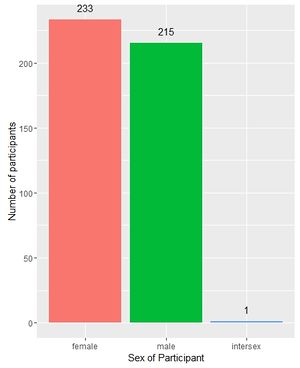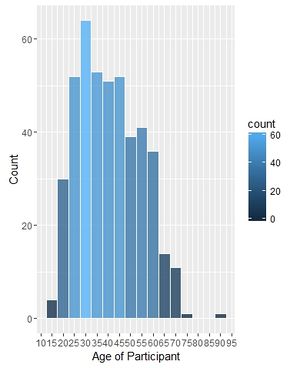Kundalini Profile Survey Analysis
The Kundalini Profile Survey is part of the Emerging Sciences Foundation's Kundalini Experimental Project hosted on the Brilliano collaboration tool. The survey contains 268 5-point likert scale questions, open text fields, and questions about the impact of a person's spiritual experiences.
All analysis documented on this page is being done by the Emerging Sciences Foundation's Kundalini Data Insights team. The complete source code for all analysis can be found on the Kundalini Discover project page in GitHub.
To participate in the Kundalini Experimental Project and contribute important research data, please visit the Kundalini Experimental Project page on the ESF website.
Contents
Analysis Goals
The Kundalini Profile Survey was created to document the types of spiritual experiences people are having, and associated physical and psychological experiences.
Analysis on the Kundalini Profile Survey has a few basic goals:
- Discover groupings of Kundalini experiences that occur together.
- Explore the relationship between different experience types and other physical and psychological experiences.
- Create an empirical, data-driven way of classifying a person's spiritual experiences.
- Lay the groundwork for future experimentation on Kundalini by providing important measures that can be used to track progress. Future research will focus on potential ways to enhance or accelerate the Kundalini process. Kundalini is seen as the biological basis of all spiritual experiences.
Summary Information
To date, 338 people from all walks of life and from across the globe have participated in the Kundalini Profile Survey.
Age and Sex
There has been broadly an equal participation from men and women, although there were slightly more women who took part. People of all ages have taken part in the survey with the majority of respondants being around the age of 30.
Core Experience Summary
The survey contains a list of 66 "core experience" questions describing classical Kundalini awakening indicators. The list was derived from previous surveys and existing literature, and respondents reported the strength of their experiences along a 5-point likert scale.
The survey contains three categories of experiences:
- Mystical indicators are those that typically transcend the normal bounds of human experience.
- Spiritual indicators are those that, although they may have sublime characteristics, might not be as radical as mystical experiences.
- Psychophysiological indicators are those that affect the body and mind through some not yet understood connecting medium.
In the data, these are represented as the mystical, spiritual, and psyphys (psychophysiolocical) question categories. In general, the data shows a very common occurrence of powerful, transformative experiences among respondents. Prevalent experiences in each category include:
- Mystical experiencies associated with the perception of unity and consciousness.
- Spiritual indicators associated with wisdom and intuition.
- Psychophysiolocal experiences associated with energy vibrating or moving in the body.
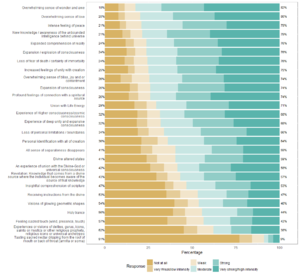 Mystical likert questions summary. Available in PDF: File:Mystical-likert.pdf |
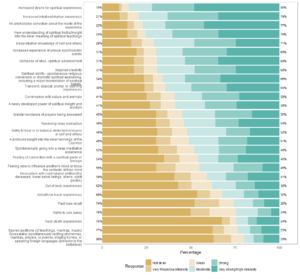 Spiritual likert questions summary. Available in PDF: File:Spiritual-likert.pdf |
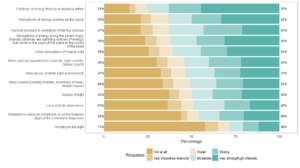 Psychophysiological likert questions summary. Available in PDF: File:Psychophysiological-likert.pdf |
Factor Analysis and Dimensionality Reduction
This section is in progress as of December 2025. Check back soon for updates or favorite the #kundalini channel in Brilliano.
Factor Analysis
- Run factor analysis on core experience categories
- Analyze correlations
Variable Cluster Analysis
- Perform ICLUST analysis
Composite Variables
- Create composite variables
Cluster analysis
- Hierarchical clustering and k-means for exploratory data analysis.
- Create classifications (segments).
- Create profiles.
